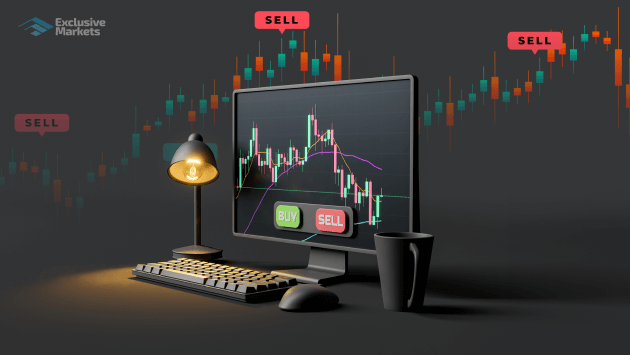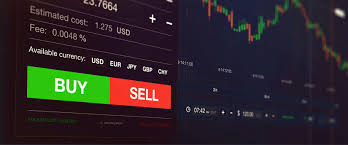
What is Forex Trading?
Forex trading, or foreign exchange trading, is the process of buying and selling currencies in the global marketplace. The forex market is the largest financial market in the world, operating 24 hours a day and involving trillions of dollars in daily trading volume. Investors, traders, and institutions around the globe participate in this dynamic market. If you want to delve deeper into the intricacies of trading, you might find valuable insights at what is trading forex fx-trading-uz.com. This article will explore the fundamentals of forex trading, its participants, how it’s done, and the various strategies that traders use to maximize their profitability.
The Basics of Forex Trading
At its core, forex trading revolves around currency pairs. A currency pair consists of a base currency and a quote currency. For example, in the pair EUR/USD, the Euro is the base currency and the US Dollar is the quote currency. Traders speculate on whether the value of the base currency will rise or fall in relation to the quote currency.
How Forex Trading Works
The forex market operates through a network of banks, corporations, and individual traders. When a trader places an order to buy a currency pair, they are essentially betting that the value of the base currency will increase compared to the quote currency. Conversely, selling a currency pair indicates a belief that the base currency’s value will decrease.
Key Players in the Forex Market
Several participants play crucial roles in the forex market:

- Centrals Banks: These institutions influence currency values through their monetary policies, which can include interest rate adjustments and market interventions.
- Commercial Banks: Major banks perform currency trading for their clients while also trading their own accounts.
- Hedge Funds: These investment funds employ sophisticated strategies to capitalize on currency movements.
- Retail Traders: Individual traders participate through forex brokers, using platforms to trade currencies for profit.
- Corporations: Businesses engage in forex trading for various operational needs, such as importing goods from other countries.
Major Currency Pairs
In forex trading, certain currency pairs have more volume and liquidity than others, making them more popular among traders. These are known as major currency pairs and typically include:
- EUR/USD – Euro / US Dollar
- USD/JPY – US Dollar / Japanese Yen
- GBP/USD – British Pound / US Dollar
- AUD/USD – Australian Dollar / US Dollar
- USD/CHF – US Dollar / Swiss Franc
Forex Trading Platforms
To begin trading forex, you need access to a trading platform. A trading platform is software that allows traders to execute trades, analyze the market, and manage their accounts. Popular forex trading platforms include:
- MetaTrader 4 (MT4): One of the most widely used platforms, offering a user-friendly interface and comprehensive analytical tools.
- MetaTrader 5 (MT5): The successor to MT4, providing additional functionalities and more advanced trading options.
- cTrader: Known for its intuitive layout and advanced charting capabilities.
- TradingView: A web-based platform popular for its social trading features and powerful charting tools.
How to Start Trading Forex
If you aim to start trading in the forex market, follow these essential steps:

- Educate Yourself: Understanding forex market dynamics, trading strategies, and technical analysis is vital. Many resources are available online, including tutorials, webinars, and trading courses.
- Choose a Reliable Broker: Look for a regulated broker that suits your trading style and offers a user-friendly platform.
- Create a Trading Account: Opening a demo account can help you practice trading without risking real money.
- Develop a Trading Strategy: This includes setting your trading goals, risk management rules, and preferred trading styles (scalping, day trading, swing trading, etc.).
- Start Trading: Begin with small trades and gradually increase your exposure as you gain experience and confidence.
Strategies for Successful Forex Trading
Traders employ various strategies to enhance their chances of success in the forex market. Here are a few common ones:
- Trend Following: This strategy involves identifying and trading in the direction of the market trend. Traders use tools like moving averages to determine the trend.
- Scalping: A short-term strategy that focuses on small price movements. Scalpers execute numerous trades throughout the day, trying to profit from minor fluctuations.
- Breakout Trading: Traders look for price levels where the market has been contained within a range. Once the price breaks out of this range, traders take positions depending on the direction of the breakout.
- Range Trading: This strategy involves identifying support and resistance levels. Traders sell at resistance and buy at support, assuming that the price will continue to bounce within the range.
Risks of Forex Trading
While forex trading can be lucrative, it also carries significant risks. Some common risks include:
- Leverage Risk: Forex brokers often offer high leverage, allowing traders to control larger positions with smaller amounts of capital. While this can amplify profits, it can also increase losses.
- Market Risk: Currency values can fluctuate greatly due to various factors, including economic data releases, political events, and natural disasters.
- Liquidity Risk: In times of high market volatility, liquidity can dry up, making it difficult to enter or exit positions at desired prices.
Conclusion
Forex trading provides a unique opportunity for individuals and institutions to engage in the global financial markets. With the right education, tools, and strategies, traders can successfully navigate this intricate environment. However, it’s crucial to be aware of the risks involved and to trade responsibly. Whether you’re a beginner or an experienced trader, continuous learning and adaptation are key to long-term success in forex trading.

